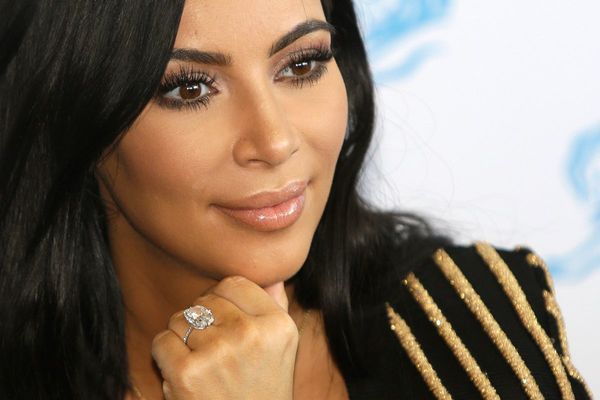
Recently, my boyfriend and I had a check-in. He told me that he felt as if I’d grown complacent when it came to physical affection. I bristled at the accusation, but clamped my mouth shut, mostly because he was right. Truthfully, it’s not the first time I’ve been given this relationship feedback.
When it comes to physical touch, my factory setting is “awkward”. But I am truly excellent at small, thoughtful gestures. Just two weeks ago I curated a care package for my partner, so that after a 10-hour flight for work he’d find a bag of liquorice, a pack of incense and a boujie bottled lemonade – all things he loves – waiting for him on the kitchen table. This tiny token of love wasn’t ballad-worthy, but it’s how I naturally show care.
Thanks to Gary Chapman, author of The Five Love Languages, it’s easy to communicate the dynamic at play: my partner and I have different love languages. Love language has become a ubiquitous trend across social media to describe the different ways in which people express and receive love. Nowadays, it’s treated with as much respect as a clinical diagnosis, but should it be? Is mine and my partner’s difference a dealbreaker? And why do we continue to use love language as a sign of compatibility and a good relationship?
Chapman’s bestselling book, which turned 30 last year, says we all give and receive love in five different ways: words of affirmation, acts of service, receiving gifts, quality time and physical touch. The book, first published in 1992, argues that many relationship conflicts can be explained by his theory of romantic miscommunication and he argues that two people might express love to one another using different “languages”, and this would result in them struggling to understand one another. Through understanding your own love language, you can ask for what you need and vice versa, he says. According to his theory, my love language is acts of service, while my partner’s is physical touch.
Now, “love language” is more mainstream than ever and only growing in relevance. TikTok and social media are a huge driver of this, and the phrase has 2bn views, with viral videos claiming to offer you analysis, such as “What your love language says about you” and jokes that coffee or Timothée Chalamet are a love language.
One user claimed she had discovered a sixth love language this year: feeling known by a partner. Yuna Lee, one-half of the TikTok account @wethelees, shared her discovery in July. “I thought we were limited to the five love languages,” she says, before going on to describe a situation where she overheard her husband telling an acquaintance why she doesn’t like scary things. Her husband, without being prompted, said Lee’s imagination can’t handle shows like Stranger Things as she becomes increasingly anxious about the subject-matter over time. “And that’s exactly right,” she says with a wistful smile. She thinks viewers are excited when they feel someone has “put into words something you’ve internalised and viscerally felt, but never processed out loud”. Like bricks in a wall, Chapman’s 1992 theory is expanding thanks to people like Yuna Lee.
People have also expanded his concept to use it as a sign of compatibility. Chapman originally meant it as a way to understand and respond to a partner’s needs, but it’s now common for friends or online voices to suggest different love languages signal a big problem between couples.
Just listen to hugely popular The Receipts podcast, hosted by Audrey Indome, Tolani Shoneye and Milena Sanchez. Mostly female listeners send in agony aunt style dilemmas, such as not feeling valued or appreciated by their partner in a specific way, and it’s commonplace for the trio to suggest the couple are incompatible because of their styles of love language. The implication is that we’re all fixed in these modes almost like a diagnosis.
How did love language receive such respect when it has no research behind it beyond Chapman’s own observations as a church counsellor and the couples who came to him for help? Chapman’s educational background isn’t in psychology, but anthropology and adult education, yet the book has gone on to sell 20m copies (including print, ebook and audio versions), according to its nonprofit Christian publishing company, Moody Publishers. The Five Love Languages’ initial success came from its largely Christian bookstore sales, but a relaunch more than a decade later marketed the title to a mainstream audience.
Relate counsellor Simone Bose tells me she uses the theory “quite often” with her clients, alongside psychodynamic approaches. “The theme for a lot of couples is that they feel disconnected, or not heard or misunderstood,” she says. It’s particularly helpful for couples who’ve been together slightly longer, as they can start to disconnect and stop “showing love and appreciation to each other in the way the other person needs”. But Bose says love languages change over time, especially during big life events, like having a child, when acts of service become more important.
William Chopik is an associate professor of social personality psychology at Michigan State University, and studies how people in relationships evolve over time. The science around love languages is not good, he says.
“There just hasn’t been a lot of really serious investigations into love languages,” he says, and it worries him when people base their love lives on the theory. “It’s a little scary how popular it is.”
What then is scientifically approved when it comes to healthy romantic relationships? Professor Chopik refers to the investment model, based on three key factors. “One is if you are satisfied: do you like your relationship? The next is investment: have you put a lot into the relationship; have you been dating for 10 years; do you have kids together; do you have joint bank accounts? And finally there is quality of alternatives: do you have other options or think you could jump ship to someone better?”
The investment method isn’t “super romantic”, Chopik jokes. But another scientific theory called “perceived partner responsiveness” has been described as the “bedrock” of intimacy by experts. The concept “boils down to the fact that you feel listened to or understood, and that someone is looking out for you”, much as Lee’s TikTok said. Rather than someone buying you gifts, but being a rubbish listener, it states that being receptive to what your partner needs at any given moment is the key to relationship health.
I’m shocked by how simple the science is: find someone you like, commit to them and make sure they want to support you.
Do we overcomplicate love? “There’s no money in that, though,” Chopik says.
However, science can’t answer everything. Experts have no idea how chemistry, that high-voltage electric spark you get when you fancy someone, works. “So, I don’t mean to sound arrogant, or like we know everything, because we really don’t.”
Anyone who’s spent time on dating apps knows finding someone you like is far from easy. But why do we gravitate towards labels and theories around relationships, rather than intuition? Chopik believes our fascination and infatuation with love languages stems from our obsession with getting feedback about ourselves. Much like the Enneagram or Myers-Briggs personality tests, which also are lacking in science, or a “which Star Wars character are you” Buzzfeed quiz, we love to learn who we really are.
“Labels provide us with really succinct explanations about the world and ourselves,” he says. “So if someone told you I’m a quality-time person, that label comes up with like a million other things attached to it. And now you think you know lots about me as a person.”
In reality, people aren’t as different as these models make out, Chopik says, we don’t differ by type, we differ by degree. In 2006, a study found that the idea people have five distinct love languages was hard to verify, but it was more likely humans use all of them at varying levels. Maybe I am affectionate, I’m just less so than my partner, but that’s OK.
Since that heart-to-heart around what we felt we were missing, my partner and I are more in sync than ever, because I took what he said on board and dialled up the affection. I can’t deny Chapman’s love language theory was a hugely helpful framework to discuss our relationship. Bose says love language is “a great way for couples to be able to break down their needs into how they want to be loved” as it offers the language to articulate these desires.
Labels, like love languages, are helpful, as they can point to a problem to work at, but they’re also limiting. I don’t feel fixed in my love language, nor do I want to be. The aim is to offer a spectrum of care, whether it’s a hug, a patient ear as they rant about something or a Kinder egg with a cute toy inside, making a partner feel their needs are met at different times, in different ways. I think that’s more heartfelt than a label.







